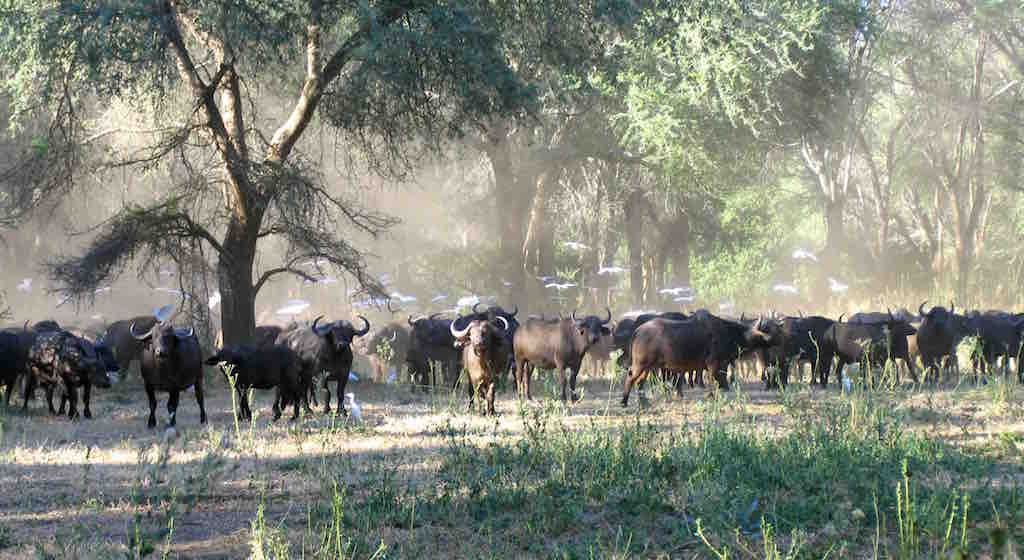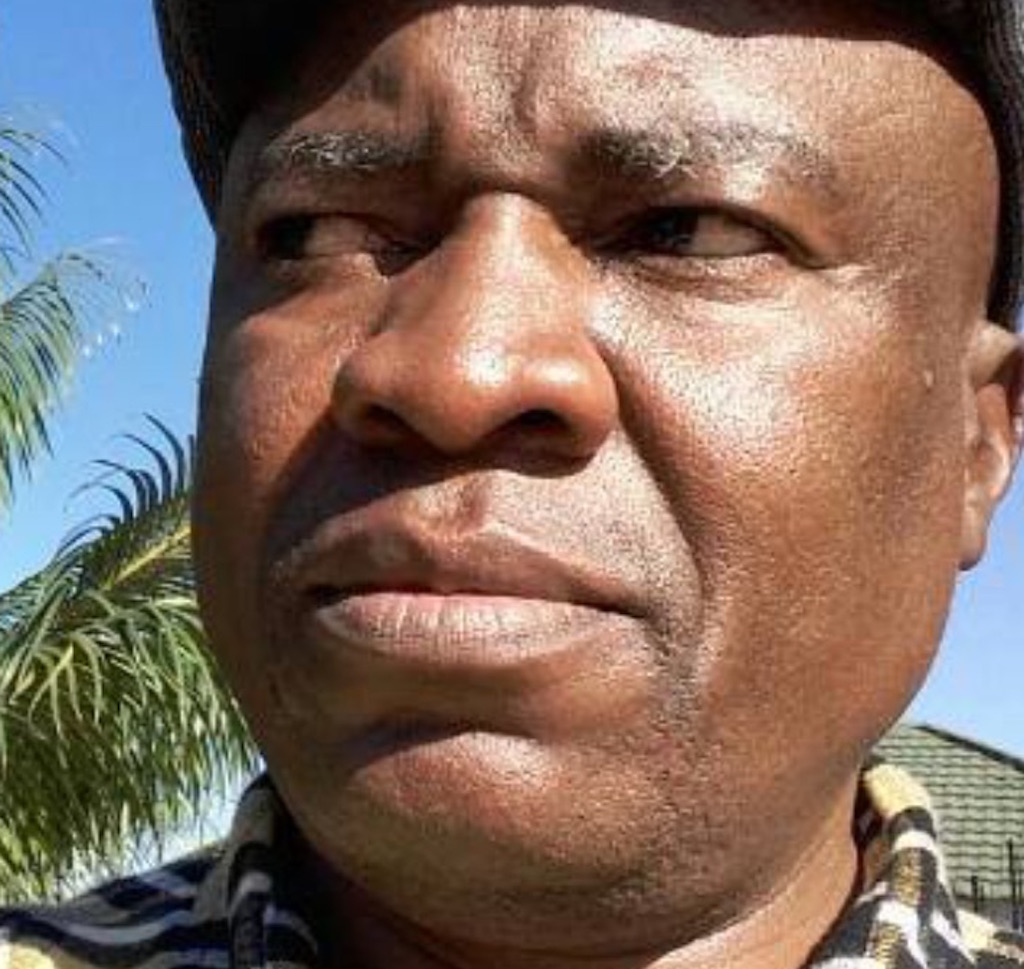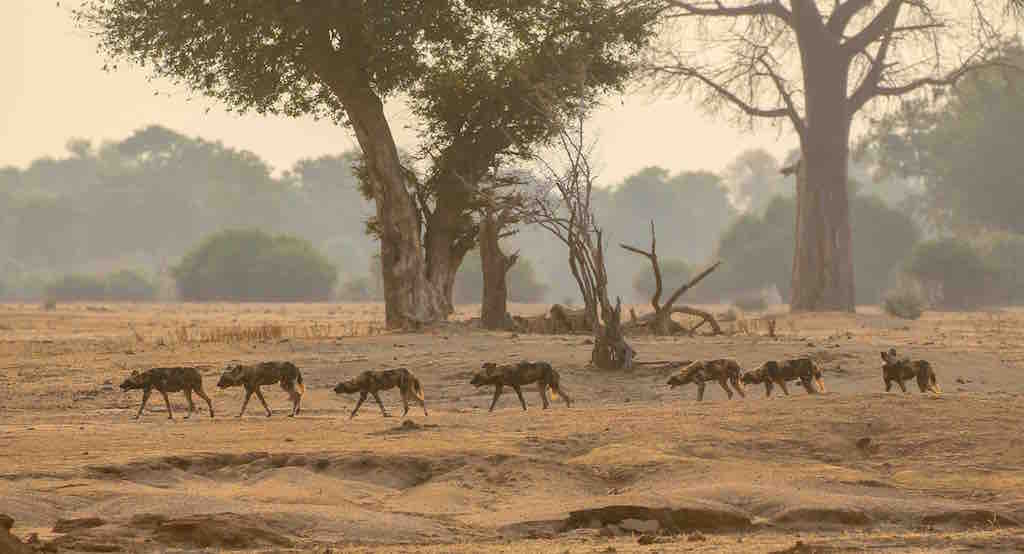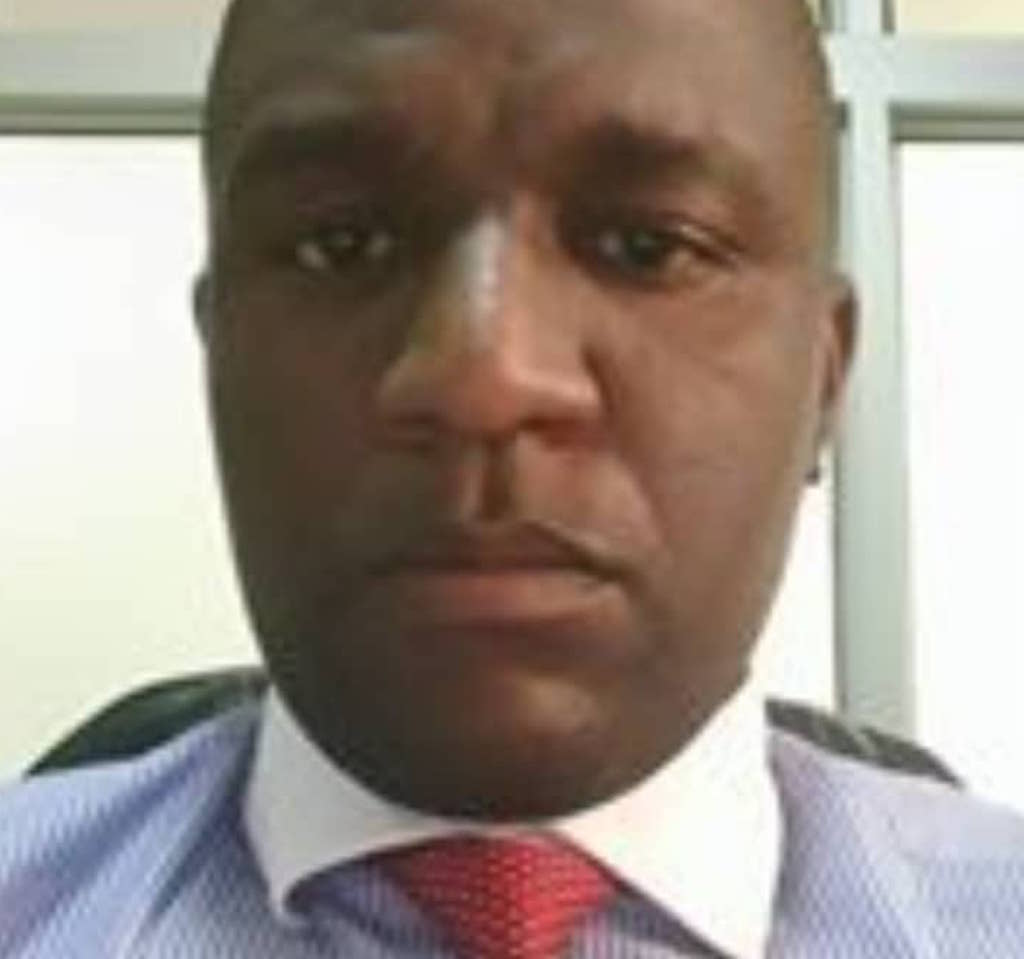
23 Jun Copper mine threatens Zambezi national park
Go-ahead for controversial open-pit copper mine in Lower Zambezi National Park has become a political hot potato in the run-up to Zambian elections scheduled for August. Oscar Nkala investigates

Pristine habitat: The UNESCO World Heritage Committee called on the Zambian government to re-consider the decision to allow mining in the national park. Photo supplied
Besides the Victoria Falls, nothing beats Zambia’s Lower Zambezi National Park (LZNP) on the tourism menu. Located roughly 180km south-east of Lusaka, the park is a pristine habitat that incorporates the Zambezi escarpment and sustains a huge wildlife-based tourism industry that employs about 1,000 people.
Save for a few run by the state-owned Zambia Wildlife Authority, most tourism facilities in the LZNP are privately owned. Here, the impact of Covid-19 remains a major concern with travel bans in Europe and the United States slashing tourist arrivals to a trickle that can hardly sustain the industry.
However, nowadays tour operators worry less about Covid-19 than what their future will hold when Australian mining company Mwembeshi Resources Ltd opens a large-scale open-pit copper mine in the middle of the national park.
Mwembeshi is the Zambian subsidiary of Australian stock exchange-listed mining company Zambezi Resources Ltd, which entered Zambia in 2003 after being granted a licence to explore for copper in the Kangaluwi area upper escarpment of the LZNP.
Its Zambian copper exploration portfolio includes special grants in Kangaluwi, Cheowa – a LZNP-based joint venture with South African miner Glencore – and the Chingola mine dumps in the Copperbelt.
Zambezi Resources had invested more than US$12-million on exploration operations in three prospect areas of the Kangaluwi special grant prior to selling the permit and Mwembeshi Resources Ltd to an Australian company called Trek Metals early in 2015.
However, the value of the mine and the company was reduced to zero when Trek Metals offloaded it to Grand Resources Limited of Dubai on April 15 2019. The acquisition effectively gave ownership of Mwembeshi Resources (Bermuda) Limited and its mineral portfolio to Grand Resources (UAE) Limited.

Significant impacts: ZEMA expressed concerns about environmental and public health impacts of the mine on the Zambezi River and lower escarpment, extending into neighbouring Zimbabwe and Mozambique. Map courtesy Mwembeshi Resources
Environmental impact assessment
After exploration confirmed copper deposits in the Kangaluwi area, the Ministry of Mines and Mineral Development awarded the company a mining licence on March 16 2012 – on condition that it submitted an environmental impact assessment (EIA) to the Zambia Environmental Management Agency (ZEMA).
In September 2012 the agency rejected the EIA because of its potentially adverse impacts on water sources, the environment and wildlife ecosystems of the Lower Zambezi.
The agency expressed concerns that the mine’s tailing storage facilities, sited on the upper Zambezi escarpment, would leach chemicals into the lower escarpment and the Zambezi River. There were also high chances of the tailing storage facilities failing because the proposed mine lies in an area prone to earthquakes.
ZEMA said failure of the tailing storage could release acid mine effluent, with significant environmental and public health impacts extending into neighbouring Zimbabwe and Mozambique. In case of a collapse of the facility, mine sludge would flow directly into Mana Pools, a Zimbabwean World Heritage Site located 25km from the Kangaluwi.
While the EIA acknowledged there was a high potential to generate acid mine drainage, it did not set out measures to be taken to address the impacts in the short and long terms, the agency found.

Water resources: The EIA failed to set out measures to address the impacts of acid mine drainage, but the minister said there were ‘available cost-effective technologies and methods’ to deal with it. Photo supplied
Legal battles
On September 19 2012 Mwembeshi Resources Ltd wrote to the then minister of lands, natural resources and environmental protection, Harry Kalaba, appealing against the ruling made by ZEMA. In terms of the Environment Management Act of 2011, the minister can, subject to certain conditions, overrule decisions of the agency.
Kalaba threw out the ruling on January 17 2014 and approved the mining project, saying it would create employment for ordinary Zambians. He said problems associated with acid mine drainage could be mitigated because there were “available cost-effective technologies and methods” to deal with it adequately.
Kalaba directed the ZEMA board to cooperate with Mwembeshi Resources “for the issuance of a mining permit subject to conditions”. However, the board ignored the order and sued the minister for interfering in its work.
The case never went for hearing because Kalaba fired the board and issued Mwembeshi Resources with a mining licence on February 3 2014.
This unilateral approach by the government angered many affected individuals, tourism operators and conservation groups. On February 7 2014, a coalition of civic organisations – including the Zambia Community Based Natural Resources Management Forum, Zambia Climate Change Network, Chalimbina River Headwaters and Conservation Trust and David Ngwenyama – lodged an application at the Zambian High Court seeking an order to freeze the minister’s decision to let mining go ahead.
The High Court ruled in favour of the coalition on October 17 2014 and froze the execution of the Mwembeshi Resources mining plan.
Exactly five years later – on October 17 2019 – the High Court withdrew the injunction against mining on the basis that the coalition had failed to submit documents required by the court between 2014 and 2019.
The coalition then turned to the Zambian Court of Appeals in an effort to overturn the High Court ruling. Earlier this year, on February 27 2021, the Court of Appeals upheld the High Court decision, effectively ending all channels of legal recourse for the coalition.
In June 2021 a coalition of local and international environmental organisations said in a statement “it has come to our attention that on May 7 2021 Zambia Environmental Management Agency (ZEMA) issued a letter approving the very controversial environmental impact statement for a large-scale open pit mine located inside the Lower Zambezi National Park.
“The Zambezi basin, whose main flow is the Zambezi river, is one of Africa’s most important basins. It’s a natural asset shared between Angola, Botswana, Tanzania, Namibia, Zambia, Zimbabwe, Malawi and Mozambique directly supporting the livelihoods of over 47-million people,” the statement said.

Under threat: The national park supports more than 1,000 tourism jobs, and one of Africa’s most important populations of elephants. Photo supplied
Tourism concerns
These moves have reignited the anxiety that has haunted tourism players in the Lower Zambezi over the past 18 years.
“Corona(virus) is an evil that affects everybody, but the Kangaluwi copper mine is a cancer eating into the bodies and psyche of people in the LZNP. We wonder what the mine means for business, the workers, their families and the infrastructure investments we have made,” said one local photographic safari operator who asked not to be named for fear of victimisation.
Other operators said there will be no future for tourism in a mining environment. “The licensing of this mine is a clear message that there is no future for tourism in Lower Zambezi. We all know that mining and tourism are incompatible. We just have to decide whether to continue investing in tourism while mining ravages the environment around us, or leave,” said safari operator Chantelle Simmonds.
Environmental NGO Conservation Lower Zambezi expressed serious concerns over the potential impacts of mining on the national park: “The LZNP is an area of international conservation significance, supporting one of the most important populations of African elephants.
“There is substantial connectivity between the LZNP and the South Luangwa National Park. Any mining will damage the environment and natural ecosystems,” the organisation said.
More than 1,000 workers stand to lose their jobs in the LZNP tourism industry and local communities who depend on renewable resources like fishing, agriculture and forestry will be affected by mining, according to the Panos Institute Southern Africa.
Regional director Vusumuzi Sibanda said the organisation is strongly opposed to the copper mine because it will destroy the environment, fragile natural ecosystems and water resources that sustain human livelihoods and the wildlife-based tourism industry.
“There are rivers and natural ecosystems that will be disturbed by mining. There are forests, wildlife and bird species as well as cultural sites unique to the LZNP. They will all be disturbed by mining,” Sibanda said.
“The voices of those living and doing business in the area must be heard. The miner and government must listen to the communities – listen to their concerns, fears and expectations and consider those to ensure that final decisions are just and reflect their concerns.”
The Kangaluwi copper project has also alarmed the United Nations. In a meeting held in Doha in December 2014, the UNESCO World Heritage Committee called on Zambia to re-consider the decision to allow mining in the LZNP.
“The committee notes with appreciation the information provided by the State Party of Zambia that the approved open cast copper mine in Lower Zambezi National Park has not been developed due to an injunction by the High Court, and wishes to remind the State Party of Zambia of its obligations under Article 6.3 of the UNESCO Convention,” the committee said.
It went on to request the Zambian government “to ensure, in any case, that the potential impacts of copper mining in Lower Zambezi National Park on the outstanding universal value of the LZNP are carefully assessed in accordance with International Union for the Conservation of Nature’s (IUCN) World Heritage advice note on EIAs before taking decisions that may be difficult to reverse”.

Harry Kalaba: The former environment minister approved mining. Now contesting the presidency in this year’s elections, he said if he was elected his government would ban mining in the LZNP ‘before lunch’ on its first day in office. Photo sourced
Political precedents
Former environment minister Harry Kalaba, who approved the mining project in 2014, broke away from the ruling Patriotic Front (PF) of President Edgar Lungu a few years ago to form the opposition Democratic Party. He is contesting the presidency and is fielding candidates for parliamentary and local government seats in the general elections set for August this year.
Kalaba was not available to answer questions following several phone calls, but in a recent interview with Lusaka-based radio station Kabusha FM, he said while he was guilty of going against technical advice in over-riding the ZEMA decision to bar mining in Kangaluwi, the approval was a collective Cabinet decision that had precedents.
“Within the Environmental Management Act, the ZEMA reports to the minister of environment and advises the minister on environmental issues. But I never acted alone on that matter. It was the minister of mines who granted the mining licence, and it was the minister of environment who overturned ZEMA’s decision.
“But if it is about being guilty, I am guilty because I was the minister. I take responsibility for overturning the agency’s decision. ZEMA decided we can’t go ahead with this project due to the environmental damage it would cause, but government looked at the wider perspective,” he said.
Kalaba said there were several precedents where the government made political decisions to approve projects with huge environmental impacts despite technical advice from bodies like ZEMA.
“There are various projects where government overruled ZEMA decisions. For example, in 2006 the agency ruled that the construction of the Sun Hotels International project could not go ahead because of the environmental impact it would have. But [then] President Levy
Mwanawasa said the project should go ahead, and government went on to overrule the ZEMA’s decision.”
He said if he was elected in this year’s elections, his government would ban mining in the LZNP “before lunch” on its first day in office.

Peter Sinkamba: ‘It would be wrong to allege corruption or bias in the manner in which the court handled the case.’ Photo sourced
Green Party
Peter Sinkamba, leader of the Green Party of Zambia, is one of the most vocal opponents of mining in the LZNP. He told Oxpeckers that the Zambian government should repeal laws that allow mining in protected and ecologically sensitive areas, and revoke all exploration and mining licences that have already been issued.
Sinkamba said based on available records, he believes the High Court judgment which lifted the injunction against copper mining in the LZNP was a fair and just outcome.
“It would be wrong to allege corruption or bias in the manner in which the court handled the case,” he said. “A perusal of the records will show that the judges who handled the matter were very fair to the litigants.
“They gave the litigants all the time they needed to sort out their shortcomings, but sadly the litigants sat on their rights for far too long. In the end, the court had no option but to dismiss the appeal.”
Sinkamba said at some point he had advised the coalition of civil society litigants to abandon their appeal and to start fresh legal action, “but they were too slow to heed advice” and proceeded knowing that they would lose the case on technicalities.
Efforts to get comment from Zambian government spokesperson Dora Siliya were fruitless as she did not responded to calls placed to her number.
However, Mines and Mineral Development Minister Patrick Musukwa told Parliament on January 5 2020 that, notwithstanding the High Court judgment in October 2019 giving Mwembeshi the green light, mining could not happen in LZNP because the mining licence granted to the company had expired in February 2017. Efforts to obtain the licence proved fruitless.
“Mwembeshi was required to start implementing the project within three years. Failure to do so rendered the mining authorisation invalid,” Musukwa said. “Therefore, Mwembeshi should re-submit an environmental and social impact assessment report to ZEMA. In short, without that approval, mining cannot start.”
Attempts to get clarity from Mwembeshi Resources chief executive officer David Rusell about whether the company plans to submit these documents were unsuccessful. It is unclear whether the company office in Lusaka is still open, and its numbers are no longer listed in the Zambian telephone directory.

Nature-based tourism: Mining would destroy the tourism industry, with ripple effects in downstream industries such as agriculture. The project also threatens more than US$5-million worth of community development investments from international NGOs. Photo supplied
Holes in the EIA
In an independent review of the original EIA submitted to ZEMA by Mwembeshi Resources in 2012, independent United States-based mining engineer Jim Kuipers said it “grossly fails to meet US and international standards for environmental impact assessments. It is our strongest recommendation that this EIA study be rejected by the government of Zambia.”
Kuipers said besides violating Zambian environmental and public health laws, the Kangaluwi copper project contravened internationally recognised standards for environmental risk management set out in the Equator Principles, as well as standards for mining in protected environments established by the International Union for the Conservation of Nature (IUCN).
An evaluation by US researcher Kellie Leigh, commissioned by the Lower Zambezi Tourism Association in 2014 “to inform discussion and decision-making”, said the Mwembeshi Resources mining proposal was deeply flawed.
“The documentation supplied by the mine proponents was independently reviewed by Zambian and international mining experts and found to be fundamentally flawed because the data presented in the EIA and subsequent documentation were insufficient to meet EIA requirements and objectives. They failed to detail the scope of the mine, the life of the mine, or its potential social, economic and environmental impacts,” the report stated.
“This finding reinforces the decision of the ZEMA to reject the mine proposal. Critically, all community and stakeholder concerns remain unaddressed,” it said. “Of particular concern is that since the EIA submission in 2012, the nature of the underlying copper resource has been changed from copper sulphide to copper oxide, yet no new EIA documents have been supplied nor any announcements made to Zambian authorities or stakeholders.”
The study said there was no sound economic argument for the mining project to proceed as modelling figures suggested that it is not economically viable, would result in a net loss of jobs for local communities and would suffer a minimum loss of US$13-million in the first seven years of operation. The EIA was also found to have vague references to a larger project whose scope was not assessed, despite potentially greater impacts on the environment.
The report said any mining inside the LZNP would negatively affect its sustainable nature-based tourism model and destroy the industry, with ripple effects in downstream industries such as agriculture, which supplies the food requirements of the tourism industry. The project
also threatens more than US$5-million worth of community development investments from international NGOs.
“The economic risk created by mining is exacerbated in protected areas due to potential impacts on community development programmes as well as sustainable tourism, and this should be carefully considered in the mine assessment process. There is no evidence provided by the company for the preservation of air, water, soil, fauna, fish and fisheries, or the protection of human health,” the report said.
“The project poses considerable risks of long-term damage beyond the life of the project to the health and wellbeing of communities, wildlife and the environment. The requirements of the Zambian Mines and Minerals Development Act (2008), the Mineral Resources Development Policy (2013) and Zambia Wildlife Act are not met by this project.”
The high likelihood of environmental contamination was not considered nor addressed in the EIA. It said data submitted by the company proved its lacks of expertise and competence to undertake responsible mining practices in a sensitive ecological environment.
The Kangaluwi copper project exposed critical legislative and policy implementation gaps for the proper evaluation and management of mining within protected areas in Zambia, the report said.
“While the Mines and Minerals Development Act (2008) allows for mining in protected areas, there is a lack of policy and legislation by which to evaluate whether a proposed mine should proceed and under what conditions, how the potential impacts should be evaluated, monitored and mitigated, who is accountable for those activities and costs, and whether responsible parties have the capacity to deliver on obligations to ensure the preservation of the environment and the protection of human health.”
The study also found that the Zambian mine licensing system was opaque and vulnerable to exploitation by ministers who are empowered to overturn technically based decisions of state agencies without having to explain the basis of their decisions.
“This report strongly recommends that the Kangaluwi copper mine project be rejected. There is no evidence to support mining activities within the LZNP. To the contrary, information indicates that there are high and long-term risks to the health and well-being of communities, wildlife and the environment, as well as cross-border implications (arising from contamination) of the shared Zambezi River.”

Chipasha Mulenga: ‘It is clear that courts in Zambia have not adequately addressed environmental matters. It is also clear that the courts’ appreciation of environmental rights is limited.’ Photo sourced
Judiciary under scrutiny
The long-running legal battles over the copper mine had exposed serious limitations in the judicial interpretation of environmental matters, according to research published by Chipasha Mulenga, Vice-Chancellor at the University of Zambia, in April 2018.
“In Zambia, the courts before whom such matters have been brought seemingly prioritise the supposed developments brought by mining investments over the environmental rights of those whose livelihoods are anchored in a clean environment,” Mulenga wrote.
“It is clear that courts in Zambia have not adequately addressed environmental matters. It is also clear that the courts’ appreciation of environmental rights is limited. This is evident from insistence on the supposed development merits brought by mining investments rather than protection of the rights of those who depend on a clean, unpolluted environment for survival.”
The study said most environmental cases were lost because the courts do not understand the complex scientific aspects involved in litigation: “For judges to make decisions on scientific aspects, they have to upgrade themselves with skills to grasp the relevant science. They need to be guided by expert advice and such counsel would have to embrace the scientific dimensions of environmental decision making.”
The courts were also found wanting when required to make judgments that should balance individual entitlements against broader societal rights and concerns. This was attributed to narrow interpretation of the law arising from limited understanding of the issues involved.
“To attain such a balance, the courts must fully appreciate the nature of the fields of environmental and human rights law by avoiding rigidity and insistence on mere technicalities to avoid upholding environmental rights. This requires the courts to embrace public litigation for environmental cases.”
Oscar Nkala is an associate of Oxpeckers Investigative Environmental Journalism. Expenses for this investigation were supported by a group of concerned tourism operators in the Lower Zambezi Valley.
• You can add your voice to the Save Zambezi, Safe Zambezi campaign here.
